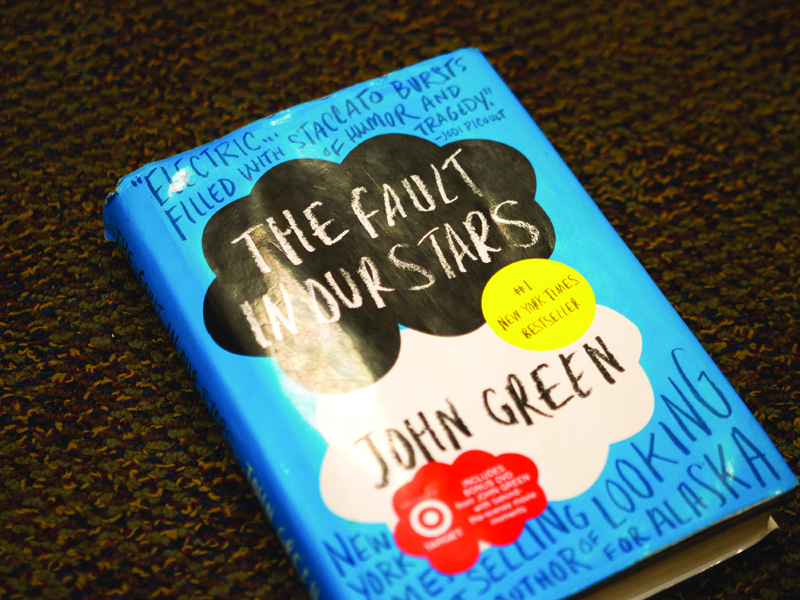
Book banning is one of the most sensitive and controversial subjects in the realm of education. From the protection of youth to disagreements on a moral level with the author or the work itself, every reason under the sun has been given to keep some books out of the hands of students. Most recently, the John Green novel “The Fault in Our Stars” has been removed from middle schools within the Riverside Unified School District.
This most recent ban came about when a concerned parent found that her daughter had taken the book home from school. A coming-of-age tale about two teenagers who suffer from cancer and fall in love, the book inevitably focuses on the pair’s sexual awakening, as well as showing the human side of high school students: less than perfect and unafraid of crude language. Not comfortable with the idea of a book containing such subject matter being readily available to middle schoolers, it was suggested to the book reconsideration committee that it be removed or only available with parental consent. On Sept. 22, the vote was cast by the committee to have the book removed.
Though understandable in their motives, the actions of the book reconsideration committee are further than what should be considered acceptable. More often than not, the act of banning a book is an exaggerated reaction to an avoidable problem.
Though discussions of teenage sexuality are generally considered taboo, it is something that most kids begin to think about as soon as they hit puberty. Evidence of this comes through in sources as famous as the “Diary of a Young Girl,” written by the 13-year-old Anne Frank. Since its publication, there have been various efforts to censor the book or have it removed from schools altogether. This drive for censorship came about due to an entry in Frank’s diary where she discusses her own bodily exploration, and the ponderance of how somebody could have sex or give birth.
Not unlike Frank’s diary, the sexuality expressed in Green’s novel falls far from the mark of exploitation. Instead, the relationship between the characters Hazel and Augustus is an attempt to show that the deeply emotional bond that the two share also contains a physical element. The two love each other on every level, choosing to deepen the bond they already have by becoming physically intimate as well. Additionally, Green seems aware of the parallel, tying the scene of his characters’ physicality with a visit to the attic Anne Frank once lived in.
Rather than banning the book for its sexual content, a better solution would be for parents to put such subjects into perspective for the children who may want to read the book. However, even if parents feel that their children are simply too young for such information, then the establishment of a system where students must obtain a guardian’s permission would be a far better solution than the outright ban of a book. Parents and educators must keep in mind that books are quite often the first to the fray in social advancement, and that even broadly accepted novels such as “The Scarlet Letter” and Toni Morrison’s “Beloved” pushed the moral boundaries of the time in which they were written, making mentions of adultery and bestiality respectively.
The line between sexuality and pornography must be understood as the difference between the exploitation of sex, and sex as a natural aspect of life. Additionally, schools must understand that they are public institutions, and that an author’s right to express themselves — should a student take an interest in reading their work — may lead to somebody else’s offense.








